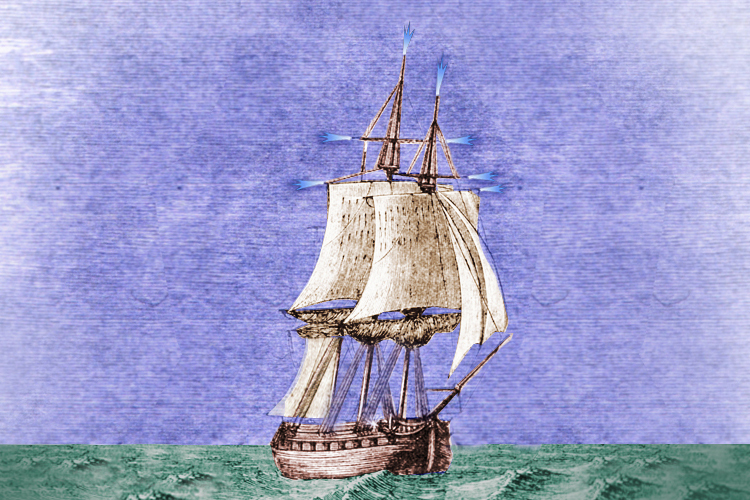
In the region between a thundercloud and the ground, a very strong electric field can be set up. There is a huge potential difference (voltage) established between the negative base of the cloud and the positive ground. When this potential difference reaches a certain value, sharply pointed ground-based objects are seen to glow, often with a hissing sound.
Because this weather-related occurrence sometimes appeared on ships at sea during thunderstorms, it was given the name ‘St Elmo’s fire’. Saint Elmo is the patron saint of sailors, and in the past, sailors regarded such an event as an omen of bad luck and stormy weather.
St Elmo’s fire is a bright blue or violet glow due to the formation of luminous plasma. It appears like fire in some circumstances coming from sharply pointed objects such as ships’ masts, spires, lightning rods and even on aircraft wings.
Etching by Dr G Hartwig/Treasures of the NOAA Library Collection/National Oceanic and Atmospheric Administration/Department of Commerce


